It seems like everywhere I look people are using CA (cyanoacrylate) glue to do just about everything. However, as someone who has acquired an allergy to the stuff I’ve had the opportunity to try a variety of other products and have found some excellent replacements. Recently, a wood ship client asked me for CA glue for his models and I thought I’d write this note to describe CA glue and some other ideas I’ve learned since I stopped using the stuff.
CA Glue
CA glue comes in three thicknesses, thin, medium, and thick, in various names depending on the brand. The best known are Zap-a-Gap and Bob Smith. I’ve tried various brands and prefer the Bob Smith brand because it comes in a variety of sizes but the quality of Zap-a-Cap is just about the same.
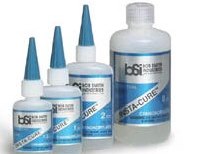 |
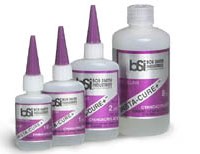 |
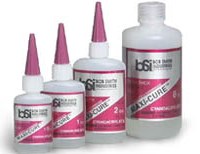 |
The fast product is excellent for ABS plastics and various metals. It works well but dries white so you have to use it just right. Also, parts cannot be moved around to fit. Once the glue touches a surface, that’s it. If you are going to use this for connecting wood to wood you have to learn to use just the right amount. Since the glue does not stick to itself, if you use to much glue, you make a mess. If you use too little glue, it soaks into the wood quickly and forms a barrier. It is also very difficult to remove once it’s on the wrong surface, causing problems in painting later on.
The medium product is good as you can move parts around slightly after you’ve connected them. However, you still have to be careful not to use too much glue. It also dries white. Some people like to use a tiny drop of CA on ratlines and other knots but the drop is never quite small enough to disappear in the work.
I have never used the extra-thick product for the simple reason that CA glue in general evaporates in the bottle and the medium stuff becomes thick quickly enough and the thin stuff becomes medium quickly enough. No matter what you do, CA glue will evaporate and eventually become too thick to use. For modellers, I recommend buying several small bottles instead of a large one.
Since I’ve become allergic to the glue, I’ve noticed that the company is now producing an odorless variety. This is the one I now prefer to send to my clients but it’s a little more expensive. However, considering what I go through if I get a whiff of this stuff, I haven’t tried it myself.
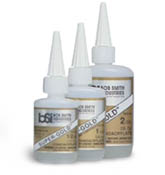 |
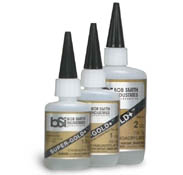 |
5-minute and 15-minute Epoxy
I’ve replaced all my CA needs with two-part epoxy and wood glue. For the epoxy, I use 5-minute epoxy and am very happy with the results. In fact, I have not found a single place where I would have preferred the CA stuff, having used dozens of bottles in the past. Yes, you have to mix a small amount every time you need to glue something but this gives you time to prepare a few parts in advance. I’ve never been able to prepare more than five or six parts at a time for gluing so this is really not a problem. The nice thing about epoxy is that is dries completely clear so you can use that to advantage when making, say, a bucket of water.
I also have a couple of bottles of 15-minute epoxy ready but I’ve never needed them. Perhaps someone who can actually prepare a bunch of parts in advance might have use for that but I haven’t figured that out. I highly recommend using epoxy over CA glue for just about any job where wood glue is not suitable.
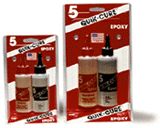 |
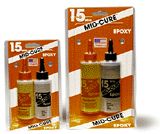 |
Wood Glue
For all my wood and knot needs, I’ve switched over to wood glue. After all, before the invention of CA glue, pretty well all wood models were built using this stuff. I have found this new product from Evergreen and it does a wonderful job. It’s quite tacky and dries quite quickly.
Over the years, I have learned a trick about this stuff you might want to know. I always have at least three bottles on the go. There is the one in current use, which I refill from time to time from the other two. This is because the glue is thick and I can squeeze out a few drops quickly when the bottle is full. It comes in 4oz and 2oz bottles.
I use both the large and the small bottles of that stuff for this reason.
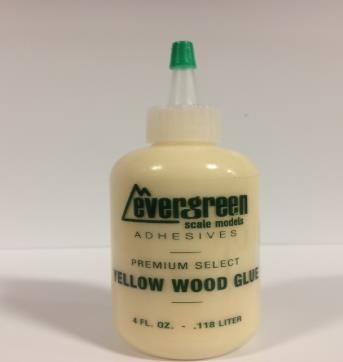 |
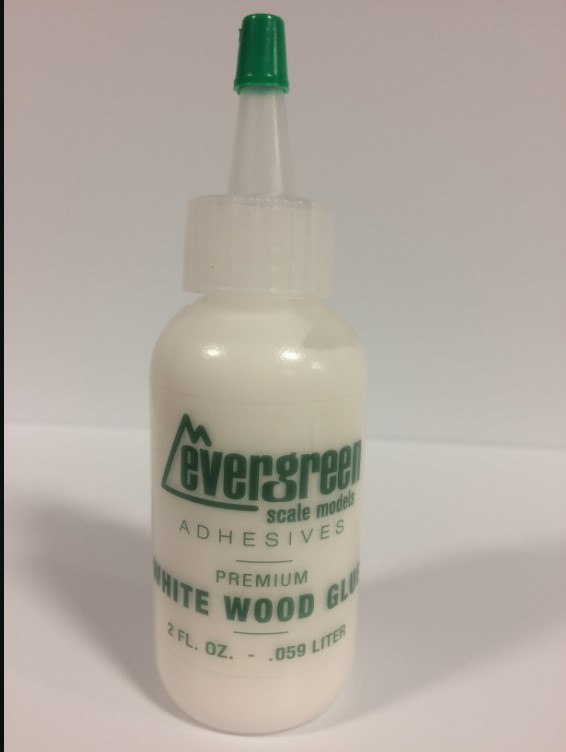 |
I use wood glue on all wood surfaces, of course, but I also use it for all my knots. I find the glue soaks into the thread and disappears, unlike the CA glue, that just kind of sits there on top of everything. I use the glue at full strength for most jobs. It’s important to clamp wood to wood for at least ten minutes and you need to clean up the squeezed out bits. I like to massage the glue carefully into lines and knots in order to make it disappear. I also use the glue slightly diluted for sails and flags. Now, of course, you need more time when using wood glue but isn’t that what modelling is all about?
Happy Modelling to All,
Rick Shousha
Modeller’s Workshop
Montreal

